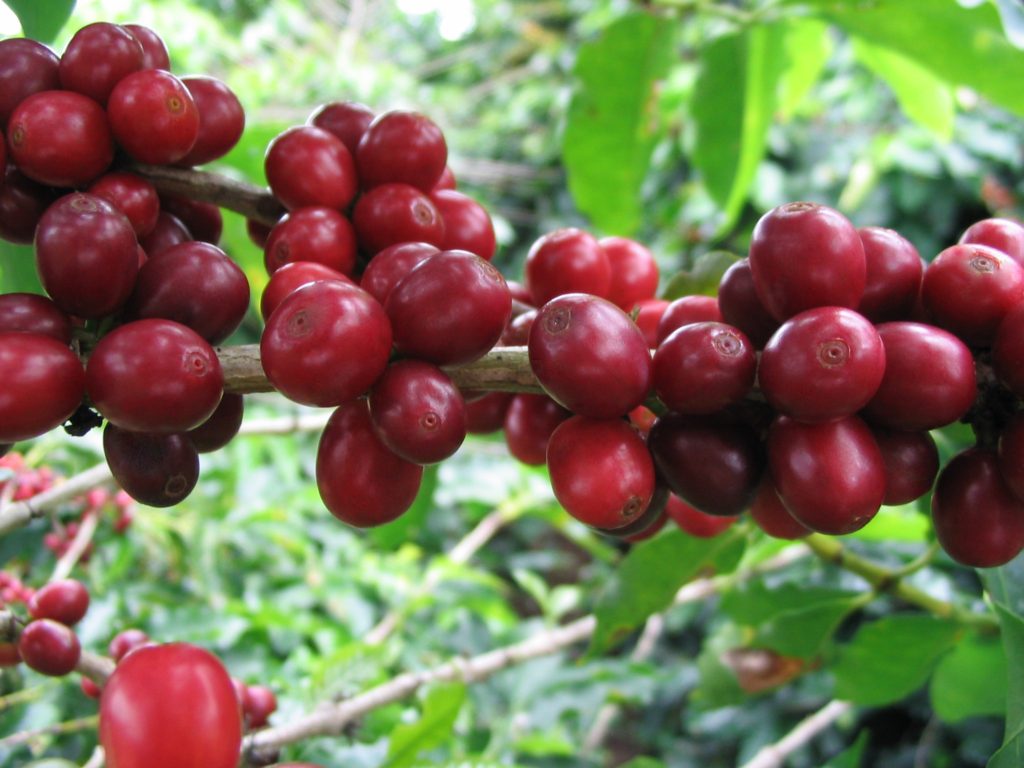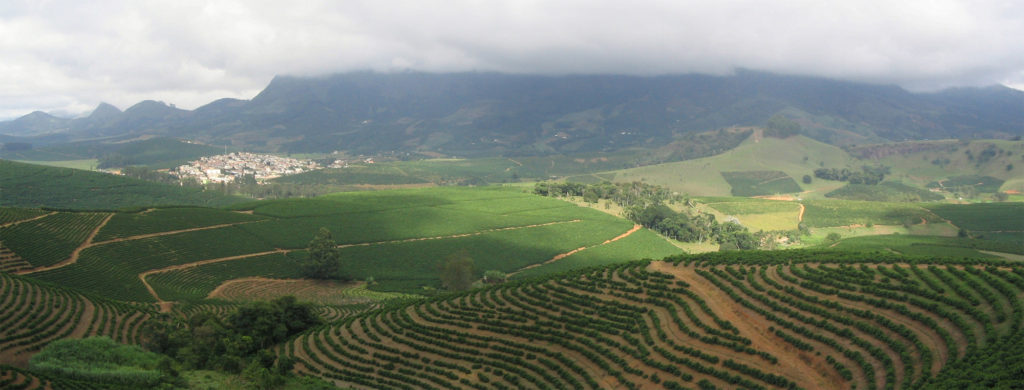Coffee rationed. Imagine that. No longer could you just get a cup of coffee whenever you wanted. No double French vanilla latte with skinny cream! No senior decaf with three sugars!
But, it was World War Two, and the U.S. was rationing everything—food, gas, clothing. So, no reason that coffee shouldn’t be added. Interestingly, the rationing occurred not because coffee was scarce, but because shipping it up from South America endangered merchant ships being targeted by German U-boats. Thankfully, the rationing only lasted one year, freeing Americans to resume their coffee habit (and get to work on time and not growl at their loved ones).

Since then, the world’s coffee habit has exploded Coffee is now the second most traded commodity worldwide, surpassed only by oil. About 22 billion pounds of coffee are produced per year, filling the daily demand of about 750 million cups. The biggest producers are Brazil (by far the biggest), followed by Vietnam, Colombia, Indonesia and Ethiopia. And although Americans aren’t the biggest per person consumers of coffee (rank 22nd among countries; Europeans drink a lot more per person than Americans), the U.S. does lead the world in total consumption (about 2 billion pounds), as we do for almost every materialistic stat.
Coffee was rationed during the war, but we might just need it again in the fight for sustainable lifestyles. Your daily cup of coffee (or three or four cups) can have a devastating impact on the environment. Traditionally, coffee was grown in the shade, under a canopy of tropical forest trees. Individual farmers tended small farms of coffee bushes in a sustainable manner that required little fertilizer, pesticides or water, and kept the soil intact and fertile. But in the 1970s, increasing demand for coffee caused a revolution in growing strategy. Small shade-grown plots were combined into co-ops, the overhead forests were cleared, and plantations of coffee bushes were planted. The new style required all the inputs of modern agriculture—fertilizer, pesticides and irrigation. Recent statistics show that at least 2.5 million acres of forest have been cleared for coffee production in Central America alone.

The change to large plantations was particularly hard because of the environment where it occurred. Coffee grows in tropical areas, where forests created habitats for a diverse fauna. The shade-grown coffee farms have been called the second most favorable habitats for biodiversity in the tropics, right below undisturbed forests. But the sun-grown coffee plantations are monocultures with no place for native biodiversity. Sun-grown coffee also impacts soil fertility and erosion, because clearing removes the trees that previously fed and stabilized soil.

Thankfully, coffee production has a chance to become sustainable again. Environmental groups, such as the Rainforest Alliance, have developed certification programs based on a return to shade-grown coffee. Other groups have developed fair-trade certifications that assure better returns to farmers and investment sin local communities. Starbucks has led the way, now serving almost entirely shade-grown coffee. This process has a long way to go, however, with only about 25% of all coffee now grown under shade, almost all from Central and South American sources. Asian countries have begun consuming and producing more coffee, with Vietnam now the world’s second largest producer. Asian countries grow almost all their coffee in the sun.
Want to do your part winning the war for sustainability? Fill your cup with that wonderful elixir brewed from certified shade-grown and fair-trade coffee. And maybe just have one cup today!
References:
Blacksell, George. 2011. How green is your coffee? The Guardian, 4 Oct 2011. Available at: https://www.theguardian.com/environment/2011/oct/04/green-coffee. Accessed December 1, 2019.
Caffeine Informer. Caffeine (Coffee) Consumption By Country. Available at: https://www.caffeineinformer.com/caffeine-what-the-world-drinks. Accessed December 1, 2019.
International Coffee Organization. Trade Statistics Tables. Available at: http://www.ico.org/trade_statistics.asp. Accessed December 1, 2019.
Moore, Victoria. 2013. The Environmental Impact of Coffee Production: What’s Your Coffee Costing The Planet? Sustainable Business Toolkit, January 31, 2013. Available at: https://www.sustainablebusinesstoolkit.com/environmental-impact-coffee-trade/. Accessed December 1, 2019.
National WWII Museum. Coffee Rationed. Available at: http://www.nww2m.com/2012/11/coffee/. Accessed December 1, 2019.
Rainforest Alliance. 2016. Rainforest Alliance Certified Coffee. September 24, 2016. Available at: https://www.rainforest-alliance.org/articles/rainforest-alliance-certified-coffee?utm_campaign=cy18aware&utm_source=18vvaawarecomms&utm_medium=cpc&s_src=ADK18VX&s_subsrc=18vvaawarecomms&gclid=CjwKCAiA5o3vBRBUEiwA9PVzalPEMLPr1ousUqeggUN95pjQ8B-dhDTIV7cKNyvfCbK1xfkIDXUQzRoCjVsQAvD_BwE. Accessed December 1, 2019.
Wernick, Adam. 2016. Can coffee become the world’s first 100 percent sustainable agricultural product? PRI, March 20, 2016. Available at: https://www.pri.org/stories/2016-03-20/can-coffee-become-world-s-first-100-percent-sustainable-agricultural-product. Accessed December 1, 2019.
